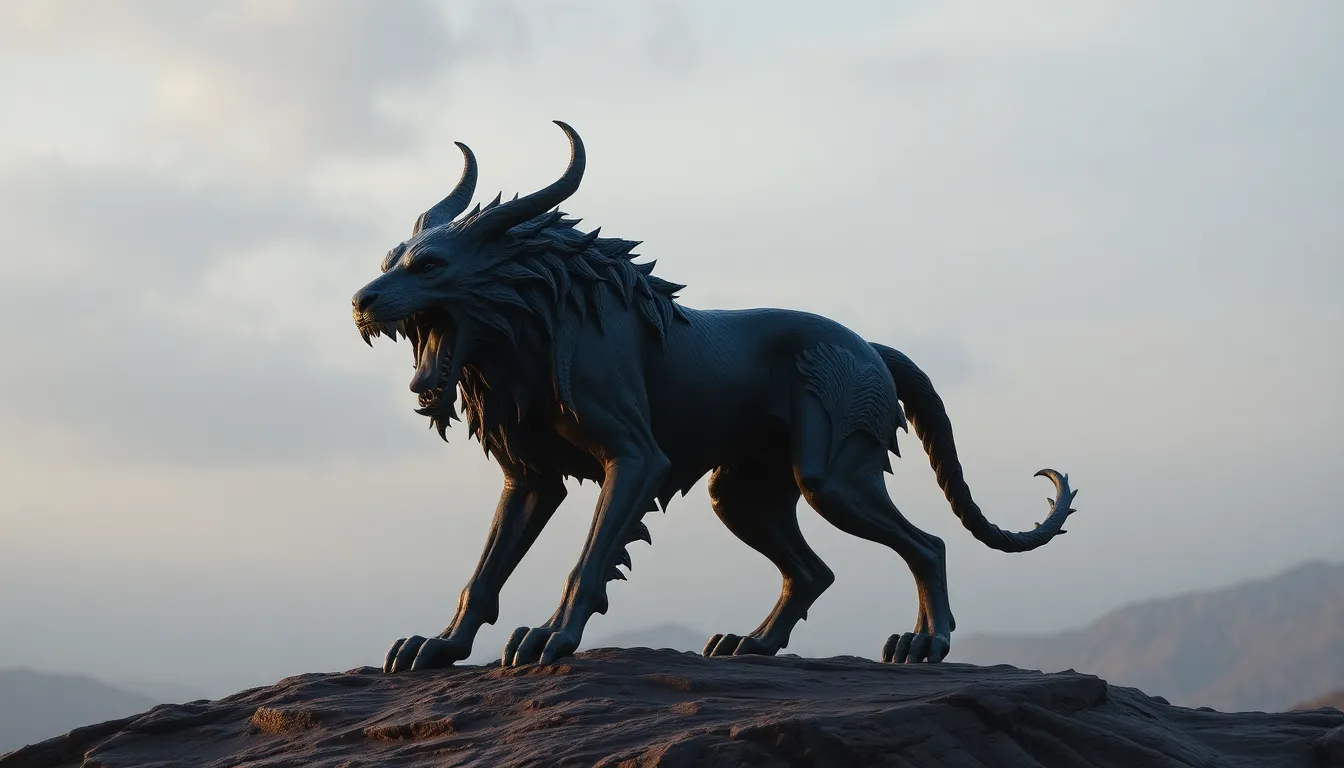Understanding Cerberus: The Mythical Beast of Hades
I. Introduction to Cerberus
Cerberus, often referred to as the “Hound of Hades,” is a prominent figure in Greek mythology, representing the guardian of the Underworld. This formidable creature is depicted as a multi-headed dog, most commonly with three heads, and serves a crucial role in the realm of the dead.
In the context of the Underworld, Cerberus’s significance cannot be overstated. As the sentinel of Hades, he ensures that the souls of the deceased do not escape the realm of the dead, symbolizing both the inevitability of death and the finality of the afterlife.
II. Origins and Family Background
A. Parentage: The offspring of Echidna and Typhon
Cerberus is born from the union of two of the most fearsome figures in mythology: Echidna, the “Mother of Monsters,” and Typhon, a monstrous giant who challenged Zeus for supremacy. This lineage contributes to Cerberus’s terrifying nature and formidable presence.
B. Siblings: Brief overview of Cerberus’s mythical family
Cerberus has several notable siblings, all of whom are legendary creatures in their own right:
- Hydra: A serpentine monster with multiple heads, each of which could regenerate.
- Chimera: A fire-breathing creature composed of parts from different animals, typically depicted with a lion’s head, a goat’s body, and a serpent’s tail.
- Sphinx: A creature with the body of a lion and the head of a human, known for posing riddles to travelers.
III. Physical Description and Characteristics
A. Traditional depictions: Three heads, serpent tail, and other features
Cerberus is most famously depicted with three heads, each representing different aspects of his character. He is often shown with a formidable body covered in dark fur, a serpent tail, and various snakes protruding from his back, adding to his fearsome appearance.
B. Symbolism of Cerberus’s appearance and attributes
The multi-headed design of Cerberus symbolizes vigilance and the ability to see in multiple directions at once. His serpent tail can be interpreted as a representation of danger and the treacherous nature of the Underworld. Together, these features evoke a sense of dread and respect, emphasizing Cerberus’s role as a guardian.
IV. Cerberus’s Role in the Underworld
A. Guardian of the gates of Hades
As the guardian of the gates of Hades, Cerberus plays a pivotal role in Greek mythology. He is tasked with preventing the living from entering the Underworld and ensuring that the dead remain there, thus maintaining the boundaries between life and death.
B. Responsibilities in safeguarding the realm of the dead
Cerberus not only guards the entrance but also serves as a judge of sorts, determining who is worthy of entering the realm of the dead. His fierce demeanor deters souls from attempting to escape, reinforcing the concept of eternal rest.
V. Cerberus in Greek Literature and Art
A. Notable references in ancient texts (e.g., Homer, Virgil)
Cerberus appears in several ancient texts, most notably in Homer’s “The Iliad” and “The Odyssey.” In “The Odyssey,” the hero Odysseus encounters Cerberus during his journey to the Underworld, where he must navigate past the beast to consult the dead.
Virgil’s “Aeneid” also features Cerberus, depicting him as a fearsome creature that guards the entrance to the Underworld, reinforcing his role as a symbol of death and protection.
B. Artistic representations throughout history
Throughout history, Cerberus has been a popular subject in art, from ancient pottery to Renaissance paintings. Artists have often depicted him in various styles, showcasing his intimidating presence and the themes of death and the afterlife.
VI. Cerberus in Modern Culture
A. Influence on literature, film, and video games
Cerberus has transcended ancient mythology to influence modern literature, films, and video games. He appears in numerous adaptations, often portrayed as a guardian or antagonist. Notable examples include:
- The “Harry Potter” series, where a monstrous three-headed dog named Fluffy guards the secret passage to the Philosopher’s Stone.
- The video game series “God of War,” where players encounter Cerberus as a formidable foe.
- Films like “Hercules,” which feature Cerberus as a character in the story.
B. Cerberus as a symbol in contemporary discussions of death and the afterlife
In contemporary discussions, Cerberus symbolizes the fear and mystery surrounding death and the afterlife. His image is often utilized in literature and art to explore themes of mortality, barriers, and the unknown.
VII. Interpretations and Symbolism
A. Cerberus as a metaphor for barriers and the unknown
Cerberus can be interpreted as a metaphor for the barriers that separate the living from the dead, representing the fears and uncertainties associated with death. His fierce protection of the Underworld serves as a reminder of the boundaries that exist between life and the afterlife.
B. The duality of protection and menace associated with Cerberus
While Cerberus is a menacing figure, he also embodies protection. He safeguards the souls of the deceased and maintains order in the Underworld. This duality makes him a complex character, representing both fear and safety.
VIII. Conclusion
A. Recap of Cerberus’s significance in mythology
Cerberus stands as one of the most iconic figures in Greek mythology, symbolizing the complex relationship between life, death, and the afterlife. His role as the guardian of Hades reinforces the themes of inevitability and the permanence of death.
B. Final thoughts on the enduring legacy of this mythical beast
As a powerful symbol of the unknown, Cerberus continues to captivate the imagination of people across cultures and generations. His legacy endures in literature, art, and modern media, reminding us of the eternal mysteries that surround death and the afterlife.




